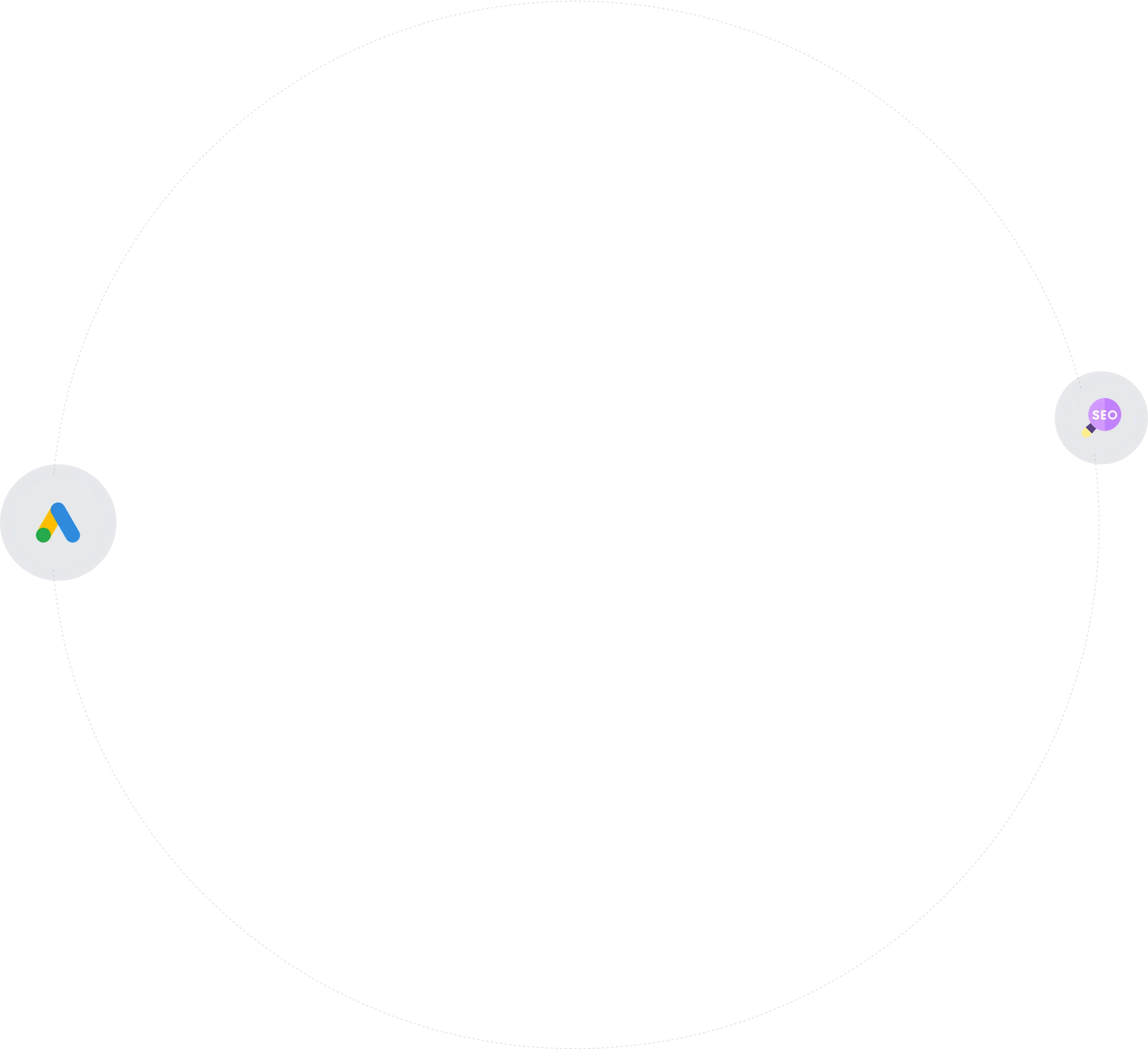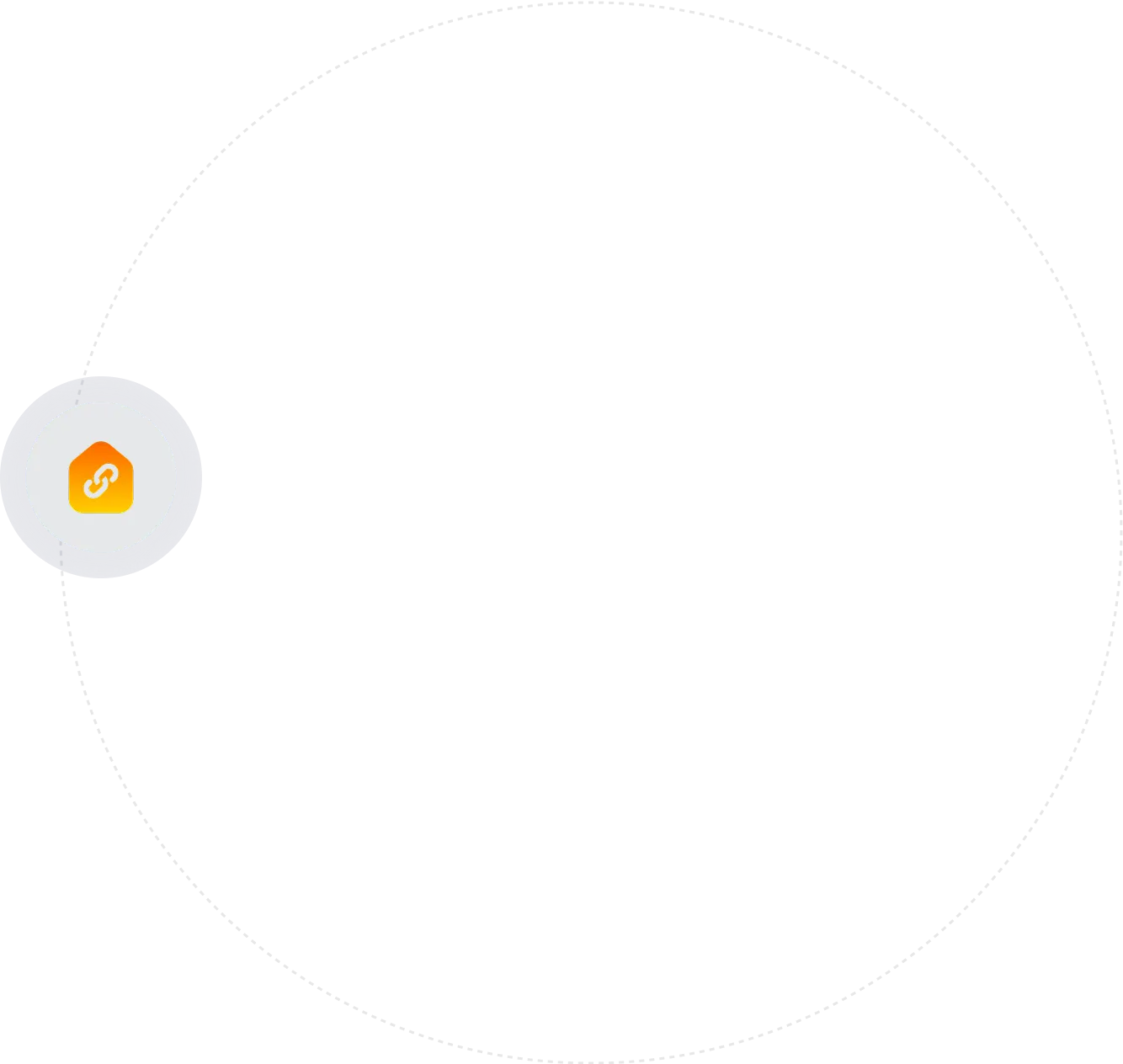
Best Prompts ChatGPT SEO Content: Why ChatGPT is a game changer for SEO
.png)

.webp)
.jpg)
The most important facts in a nutshell






.webp)

Then now is the right time! Together we will turn your website into your strongest sales channel - with a clear strategy and measurable growth.
Get free adviceCreating SEO content in record time sounds too good to be true? Thanks to AI tools such as ChatGPT, that is exactly what is possible. But how do you really get the most out of AI without ultimately producing generic texts that no one wants to read? Targeted prompts not only save time, but also create depth of content that really reaches your target group. But how do you make good use of ChatGPT for your SEO strategy? And which prompts are really helpful?
What impact does AI have on SEO and content marketing?
Content marketing without artificial intelligence? Hardly imaginable by now. The combination of human know-how and AI-supported tools such as ChatGPT is the new dream team for scalable content. This has enormous advantages, particularly in the SEO environment: texts can be created faster, content gaps identified and keywords can be efficiently clustered. But what exactly is ChatGPT's role in this process?
AIs like ChatGPT are changing the way we create texts, cluster keywords, and develop ideas. The days of having to click through keyword research tools for hours are a thing of the past. With the right instructions, ChatGPT delivers long-tail keywords, content structures, meta descriptions, and even text ideas, perfectly tailored to your target group. However, anyone who simply enters vague prompts such as “Write a blog article about SEO” is usually disappointed. ChatGPT may be a powerful tool, but it's only as good as the input you give it. That's why it's crucial to formulate your instructions precisely, with the focus keyword, target audience, tone, text structure, and goal of the output. Only then does ChatGPT become your personal SEO co-pilot.
How exactly can ChatGPT help me with my SEO content and what is there to consider?
Imagine ChatGPT as an intelligent, learning-enabled assistant that is based on a huge database (Large Language Model) and can generate complex texts in seconds, provided you know how to communicate with it. Its main strengths lie in speed, variety of expressive options and the ability to summarize huge amounts of information in a compact way. But beware: ChatGPT doesn't verify facts. This means that as a content manager, you should always take a critical look at the texts created. AI is also not always creative or innovative, but often tends to repeat familiar patterns. For innovative marketing strategies, you still need real creativity, paired with data-driven analysis.
Other typical difficulties include the fact that
- ChatGPT doesn't exist if it doesn't know something
- content may be out of date or incorrect
- creative approaches are often limited and
- that understands AI irony, cultural context, or industry-specific language only to a limited extent.
Therefore, you should always review the content created by ChatGPT editorially and adapt it if necessary. Nonetheless, ChatGPT is revolutionizing SEO content production. It helps you develop ideas, create keyword-based outlines, structure texts and even simulate different tonalities for different target groups. Used correctly, it is therefore a real accelerator for your SEO and content marketing processes.
ChatGPT for SEO content: practical examples
While SEO thrives on structure, strategy and data, ChatGPT provides the linguistic, organizational and creative implementation of them. The combination thus ensures more efficient processes, better content and ultimately better rankings. An example: When researching keywords, tools such as SISTRIX or Ahrefs can provide a solid database. But it is only with ChatGPT that it becomes a usable structure. For example, you can write: “Create a list of keyword clusters about ChatGPT for SEO, organized by search intent.” Within seconds, you'll get a sorted list with appropriate headlines, ideas for blog articles, and even meta descriptions.
AI can also help you automate typical SEO tasks such as creating snippets, meta descriptions, or tables of contents. With precise prompts such as: “Write me a meta description for an article about long-tail keywords in SaaS marketing, maximum 150 characters,” you will already get results that are often 70-90 percent ready for use. ChatGPT therefore does not replace an SEO strategy, but is a tool that builds on existing structures. You still need a good understanding of your target audience, their search intent, relevant keywords, and a clear content architecture. Only then can you use the full potential of ChatGPT for SEO.
The most exciting areas of use of ChatGPT in everyday SEO, including prompts
Here is an overview of the SEO areas that ChatGPT can help you with:
- Support SEO project planning: Get a simple editorial plan created, such as “Plan 10 consecutive blog articles for an entry-level SEO course with publishing intervals, keywords and target group focus.”
- Content ideas & topic suggestions: Ask for topic ideas for blog articles, guides, FAQ content or seasonal campaigns, such as “Give me 10 topic ideas for SEO content in the area of sustainable fashion.”
- Analyze search intent: ChatGPT can help you better understand the search intent behind a keyword — e.g. by asking: “What is the search intent in 'CRM comparison free of charge? ' ”
- Formulate keyword clusters: Get appropriate headlines, paragraphs, and content ideas for your keyword clusters generated, including subheadings and snippet suggestions.
- Structuring SEO texts: Enter rough topics or a target keyword and ask ChatGPT for a logical text structure including H1, H2, H3, introduction and CTA.
- Content briefings for your team: Based on a topic, generate a detailed briefing with target group, keyword focus, structure and text goal for other authors or freelancers.
- Develop a structure for comparison pages: Ask ChatGPT to provide you with the ideal structure for a comparison article, including comparison criteria, reviews, benefits/cons, and CTAs (e.g. “Structure a comparison page for 5 project management tools”).
- Create SEO texts: ChatGPT can also write you complete SEO texts based on a focus keyword and a short content specification, including introduction, subheadings, running text, meta description and call-to-action. For example, you give the prompt: “Write an SEO text with around 800 words on the topic of 'vegetarian diet for beginners', a relaxed and informative tone, target group: young adults.” The result saves an enormous amount of time, especially with standardized text types (guidebooks, product texts, category texts).
- Generate content summaries: Create concise summaries or TL; DRs for long articles, ideal for sections above the fold, for meta descriptions, or to improve the user experience.
- Get headlines and CTAs tested: Get 5-10 variants for headlines, teasers or call-to-actions suggested, depending on your style and target group. This allows you to quickly find the right tonality for your readers.
- Prepare SERP comparisons: Ask ChatGPT to summarize the content on the top 10 results for a specific keyword, including similarities, structural elements, or “gaps” that you can do better.
- Generate title & meta variants: Formulate several variants for meta titles or descriptions and test which sound particularly click-strong, perfect for A/B testing.
- Automate alt texts & image descriptions: Create SEO-compliant image descriptions quickly and efficiently that are barrier-free and search engine friendly.
- Create FAQs automatically: Have questions and appropriate answers created for you on a topic that increases usability and is ideal for potential rich snippets.
- Optimize featured snippet: Ask for a concise definition, list, or step-by-step explanation of a topic, tailored exactly to the format of a featured snippet (e.g. “Reply in max. 45 words to: What is off-page SEO? “).
- Scale local SEO texts: Enter text as a template and a location (“Create a version for Berlin, Hamburg and Munich”). Perfect for service providers with multiple locations.
- Create multilingual content ideas: You can also use ChatGPT for international keyword strategy and get English (or Spanish, French, etc.) that matches a German keyword Suggest content ideas and keyword combinations.
- Content optimization of existing texts: Ask the AI to make existing content more readable, check keyword density, or rewrite paragraphs, including suggestions for more structure and clarity.
- Transform content formats: Convert existing text into another format, such as from a blog article, an FAQ, a newsletter, a YouTube script, or a social media post. Perfect for content recycling and omnichannel strategies.
- Write drafts for structured data: ChatGPT can also generate tags for common structured data based on your content, e.g. for articles, FAQs, organization or local business.
Useful ChatGPT Prompts: How to Create the Ultimate Prompt
What exactly makes for a good prompt? And how do you get ChatGPT to get exactly what you need for your SEO content without spending hours trying around? In this section, we'll show you how to formulate the perfect prompt step by step, which elements should definitely not be missing, and how to achieve better, more targeted results with clear instructions.
What does a ChatGPT prompt have to contain?
A prompt is nothing more than an instruction that tells ChatGPT what it should do. Sounds simple, but in the end, it is the art that determines the success of the results. SEO prompts in particular depend on precision, structure and context. A good SEO prompt therefore contains at least the following elements:
- Prompt goal
- Information about you/your company
- Target group
as well as in the case of content creation
- Focus keyword or subject area
- desired text type (e.g. blog article, meta description, email)
- tonality (e.g. factual, humorous, advisory),
- Text structure (e.g. introduction, main part, conclusion)
- special notes (e.g. WDF*IDF, keyword density, call-to-actions)
An example: “Write an SEO-optimized blog article for beginners about photography with a focus on tips, beginner equipment, free image editing apps, including bullet points (if appropriate), 1,500 words, target group: amateur photographers, solo self-employed people, tonality: motivating. ”
The clearer you are, the better the result. Instead of clicking through 100 tools, you can get a complete draft article in just a few minutes, including keyword integration, meta title, meta description, and suggested outlines.
Step-by-step guide: How to formulate the best ChatGPT SEO prompts yourself
So that you can start implementing it right away, here is a quick guide on how to optimally structure your individual prompt:
Step 1: Define goal
First, formulate what you want to achieve with the prompt. Is it about brainstorming, researching, structuring, copywriting or optimization? ChatGPT needs this context to deliver appropriate results.
examples:
- “I need topic ideas for a blog about vegan nutrition. ”
- “Help me find long-tail keywords for photovoltaics. ”
- “Structure an existing article for better readability. ”
Step 2: Share information about yourself or your project
Depending on the application, it is worth briefly mentioning who you are or who the prompt is intended for. This helps the AI better understand style, depth, and relevance.
examples:
- “I run an online shop for sustainable fashion. ”
- “I'm a freelance copywriter writing for B2B customers. ”
Step 3: Define target group
State clearly who the content is intended for, after all, in the best case scenario, the tonality, examples and terms should suit the target group right from the first try. But age, level of knowledge, industry or interests are also important clues.
examples:
- “Target group: SMEs looking for local SEO solutions. ”
- “The text is aimed at fitness beginners. ”
- “Reader: amateur gardeners with little previous experience. ”
- “Customer group: tech-savvy men between 20 and 40.”
- “Text for startups without previous technical knowledge”
- “Buyer Persona is a B2B purchasing manager in mechanical engineering”
- “Target group: parents with school-age children”
- “The blog focuses on SEO freelancers in German-speaking countries as readers”
Step 4: Name the focus topic or keyword (if relevant)
If you're working with a specific topic or SEO focus, state it directly. This can be a single focus keyword, a subject area, or even a list of keywords.
examples:
- “Focus keyword: 'CRM software comparison'”
- “Topic: Photography for food blogs”
- “Also use these keywords: 'vegan protein, ''vegetable protein sources.'”
Step 5: Promptly specify depending on the goal and use case
Depending on what you need, the structure differs:
For brainstorming (topics, content formats, questions)
- Ask for lists, suggested outlines or creative inspiration.
- Use open wording with restrictions on target group & topic.
Example prompt:
“Give me 10 topic ideas for blog articles about zero waste for a young, urban target group. ”
For keyword research & clustering
- Name the main topic and ask to sort by search intent or funnel level.
- Optional: Ask for appropriate headlines or content suggestions for each cluster.
Example prompt:
“Create a list of keyword clusters on the topic of 'vegan diet, 'sorted by search intent (informational, transactional, navigational) . ”
For text structure & content planning
- Include the topic, target group, text type and structural requirements.
- Add notes about tonality, length, or structure.
Example prompt:
“Create an SEO-compliant structure for a blog article about 'sustainable fashion in everyday life, 'target group: environmentally conscious women 25—40, tonality: inspiring. ”
For complete text creation
- Expand the prompt: topic, keyword, target group, text type, sound, structure, additional information.
- You can also mention meta title, meta description, or internal linking.
Example prompt:
“Write a blog article (1,200 words) about 'vegan sneaker women, 'target group: sustainability-conscious women, tone: motivating, structure: introduction, benefits, brand comparison, conclusion. Includes meta description (max 155 characters) . ”
To optimize existing content
- Share the source text or describe what needs to be improved.
- Ask for suggestions for structure, style, keyword density, clarity, or UX.
Example prompt:
“Revise the following text section for better readability, keyword density 1.2%, goal: Better ranking on Google for the keyword 'Online Marketing Trends 2025' . ”
Step 6: Provide additional information (optional but extremely helpful)
The clearer your prompt, the better the result. Additional information therefore makes sense in any case. Especially when creating or optimizing SEO content, for example, even small notes about tonality, structure or objectives can ensure that you immediately get a useful result instead of having to go through the third correction loop. Therefore, use this step to refine your request and optimally tailor ChatGPT to your requirements. This not only saves you time, but also significantly increases the relevance and quality of the generated content.
Here are a few examples of useful additions when it comes to SEO content creation:
Desired length: Provide an approximate word count or length format, such as “approx. 800 words,” “2 short paragraphs,” “meta description max 155 characters,” or “product text in 60-100 words.”
Formatting requests: For example, you can specify:
- “Use H2/H3 for subheadings”
- “Use bullet points for benefits”
- “Format with emojis for social media”
- “Create a table to compare”
Content goal: Formulate what you want the text to pay for, for example:
- “Goal: cover featured snippet”
- “Strong conversion for email CTA”
- “Informative but also sales-oriented”
- “Ideal for SEO and simultaneous use of social media”
SEO requirements: If you want to meet certain SEO criteria, say so directly. For example:
- “Keyword density: 1-1.5%”
- “Use WDF*IDF terms around 'content marketing””
- “Integrate related keywords such as 'content strategy, ''write SEO texts.'”
- “Please include meta title and description”
Target system/ channel: If you need the text for a specific platform or page, mention it:
- “Text for WordPress blog, including slug suggestion”
- “SEO social media post for LinkedIn”
- “Shopify Store Product Description”
- “in the form of a white paper (3,000 words)”
- “as a product description for an online shop”
- “as a comparison article for an affiliate site”
Sound and perspective (if not mentioned yet): Depending on the brand or medium, this can be decisive:
- “Tonality: objective, neutral”
- “Casual and youthful, you-speak”
- “Professional for B2B publication”
- “Use first-person perspective for personal introduction”
But you can also include additional information for keyword research, content briefings or cluster analyses to get more relevant results:
- “Please enter the presumed search intent for each keyword (informational, transactional...)”
- “Sort suggestions by funnel level (Top/Mid/Bottom of Funnel)”
- “Add a suitable content format and an example H2 to each keyword cluster”
- “Please in the style of an agency briefing template with bullet points and a clear outline”
- “Show all suggestions in tabular form with columns for keyword, intent, content idea and URL type”
These details turn a “very good” prompt into a really effective SEO prompt that gives you results that you can use directly or process with minimal effort. The more often you work with this structure, the easier it becomes to formulate your prompts quickly and accurately, whether for brainstorming, keyword clusters, content briefing or finished texts. And the best part: You can use many of these additions over and over again with copy/paste as building blocks.
Expert tip: Use roles, target groups and media types in a targeted manner
By the way, so-called role prompts are a real game changer. In doing so, you consciously place ChatGPT in a specific professional or professional role. So instead of just saying “Write a text about XY,” say something like:
- “Act as an SEO expert with 10 years of experience. ”
- “You're an ad copywriter who specializes in conversion-optimized Google Ads. ”
- “You are an editor for a trade magazine about AI chatbots. ”
- “You are a UX writer who creates barrier-free texts for a health app. ”
With this type of prompt, you define the technical framework, but also often the tonality, structure and content depth of the answer. As a result, the texts appear more natural, professionally based and significantly more targeted, especially when it comes to topics that require explanation or content that should radiate expertise and trust. This gives you content that is much closer to your desired result, in terms of language, content and structure. Combine this with target group information (“for startups”, “for HR managers”) and media formats (“LinkedIn post”, “white paper”, “product description”) and you get high-quality content at the push of a button!
Example prompt: “You are an experienced SEO copywriter for e-commerce. Write a product description for a bamboo toothbrush, target group: sustainability-conscious women (25-45), format: online shop text (100 words), tonality: friendly, informative, with emotional introduction and call-to-action. ”
ChatGPT prompts for various marketing channels
ChatGPT can not only be used for classic blog articles, but only develops its full potential when you use it across channels, for example for social media campaigns. Here are therefore the best ChatGPT prompts that you should know about the various social media and other channels:
Emails & newsletters: Write faster with AI
Time-wasting email marketing? Not with ChatGPT. The AI creates structured, appealing emails in a flash, from subject line to call-to-action. An example:
“Write a follow-up email for a webinar about SEO strategies for online shops, tone: professional, goal: conversion. ”
You will receive a ready-to-use mailing with a clear structure, emotional language and conversion focus. Ideal for newsletters, sales funnels or onboarding routes.
Ad texts for Google Ads & Social Media
Writing ads means: maximum effect in a minimum of space. This is exactly where ChatGPT shines with precise formulations. Exemplary prompts:
- “Create 3 Google Ads headlines for a coaching platform. ”
- “Formulate two creative ad texts for Facebook ads on the topic of AI in recruiting. ”
In just a few seconds, ChatGPT provides you with linguistically strong, relevant advertising texts based on the target group and the offer. A real advantage when it comes to A/B testing or the rapid rollout of new campaigns.
Content snippets for LinkedIn, Instagram & Co.
Social media thrives on snackable content, i.e. short and concise posts with impact. ChatGPT also provides useful building blocks here. An example:
“Write a LinkedIn post about the best ChatGPT tricks for SEO specialists, with hashtags and CTA. ”
With these types of prompts, you can create the right content for every platform, adapted to language, target group and objectives. This makes your marketing more efficient and consistent.
Conclusion: The best ChatGPT prompts for SEO content
AI can definitely make work easier, but it can't replace it. However, people are still irreplaceable, especially in areas such as strategic content planning, target group psychology or intercultural marketing. The use of intelligent technologies such as ChatGPT is therefore most comparable to a good navigation system. It shows you the way, but you decide whether you really drive it. No chatbot replaces sophisticated search engine optimization and no AI decides for you what really suits the website, user intent and brand identity. Our recommendation is therefore: combine the best of both worlds.
Use the AI chatbot specifically to find ideas and keywords, structure, structure and content preparation and optimization, but bring in your own experience as an SEO specialist or marketer, in particular when strategically selecting keyword ideas, evaluating real-time data or understanding the specifics of your target group and market. The SEO functions of tools such as SISTRIX, Semrush and Ahrefs also help you with this.
And if you need help getting started or integrating AI into your SEO processes, we are happy to assist you as an experienced SEO agency.

FAQ: The most common questions about the best ChatGPT prompts
Below you'll find answers to the most common questions about the best ChatGPT prompts for your SEO content.
How do I find the best ChatGPT prompts for my topic?
Test different formulations, be specific, give structure and define target group and format. You can also use tools such as AIPRM or prompts databases.
Is ChatGPT really suitable for professional SEO content?
Yes, with the right prompt, ChatGPT provides solid drafts for meta data, blog articles, lists, or FAQs. However, final optimization by people remains important.
Which SEO tools best complement ChatGPT?
AIPRM, SISTRIX, Ahrefs, Semrush and Ubersuggest are ideal for keyword analysis, competitive analysis, and content optimization.
How do I learn to write better ChatGPT prompts for SEO content?
Practice makes perfect. See what works, learn from examples, save good prompts, and optimize them with every use.
Are you ready for rocket growth?
Arrange your personal consultation now and find out how we can help you get ahead in search engine marketing. Whether you run a small company or are responsible for a large corporation - we will find the right solution for you.


.svg)
.webp)
.webp)




.webp)





.webp)








